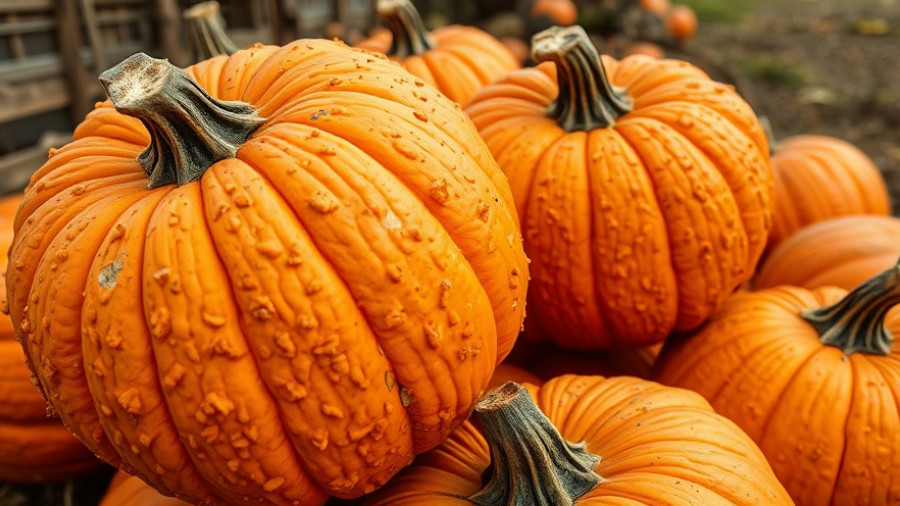
Unveiling the Hidden Risks in Your Favorite Gourds
This Halloween, as we carve and display pumpkins, it's essential to be aware of some unsettling truths about these beloved gourds. A recent study from Kobe University has unveiled that pumpkins and other gourds can absorb harmful pollutants from the soil, storing these toxins in their flesh. Researchers discovered that a small protein variation within these plants allows them to actively bind and transport contaminants, making them more susceptible to collecting dangerous substances than other vegetables.
The Science Behind Pollutant Accumulation
Understanding why gourds, such as pumpkins and zucchini, have this particular trait could revolutionize food safety. Inui Hideyuki, an agricultural scientist involved in the research, noted, "The main issue is that these pollutants don’t easily break down, posing health risks when consumed." By studying the proteins known as major latex-like proteins (MLPs), scientists are beginning to unravel the mechanisms by which these gourds can sequester harmful chemicals. The frequency of these proteins' presence in the sap points to key differences among various pumpkin varieties, shedding light on how we might cultivate safer crops.
The Potential for Healthier Crops
With this groundbreaking research comes an opportunity for positive change. By potentially manipulating the genetic structure of these proteins, agricultural scientists hope to develop pumpkin varieties that resist pollutant absorption or serve beneficially as natural soil cleaners. If successful, this could lead to significant advancements in reducing food contamination and improving agricultural practices worldwide.
Gourd-Related Waste: A Call to Action
Beyond consumption safety, there's an urgent need to address pumpkin waste, especially during the Halloween season. Millions of pumpkins end up in landfills, where they contribute to methane emissions, a potent greenhouse gas. Initiatives like Pumpkin Smash in Illinois are paving the way for better waste management, where residents can return their old pumpkins for composting rather than tossing them away. Reusing and recycling our pumpkins not only benefits the environment but can also enrich soil health.
Concluding Thoughts
As we celebrate and indulge in the vibrant joys of autumn fruits, let's be mindful of where our pumpkins come from and their potential impact on health and the environment. The research on pumpkin toxicity not only informs safer eating practices but prompts us to rethink our pumpkin waste strategies. By embracing sustainable practices, we can enjoy a healthier season and contribute positively to our planet.
 Add Row
Add Row  Add
Add 




Write A Comment